Fiddle Leaf Fig Care
This post may contain affiliate links, please see our policy for details.
Fiddle leaf fig care with tips on using the right soil, watering your plant and propagation.
Fiddle Leaf Fig (Ficus lyrata) Care
The fiddle leaf fig, or the Ficus lyrata, is one of the most popular, trendy indoor plants around today. They make a gorgeous focal point in any room, though they can be somewhat of a challenge.
It took me years to try my hand at growing a fiddle leaf fig. I bought into the hype that they were challenging so I stayed away from them for several years.
I finally caved and bought one and I’m happy to say that my first and only fig, Leo, has been with us for 3 years.
He’s thriving.
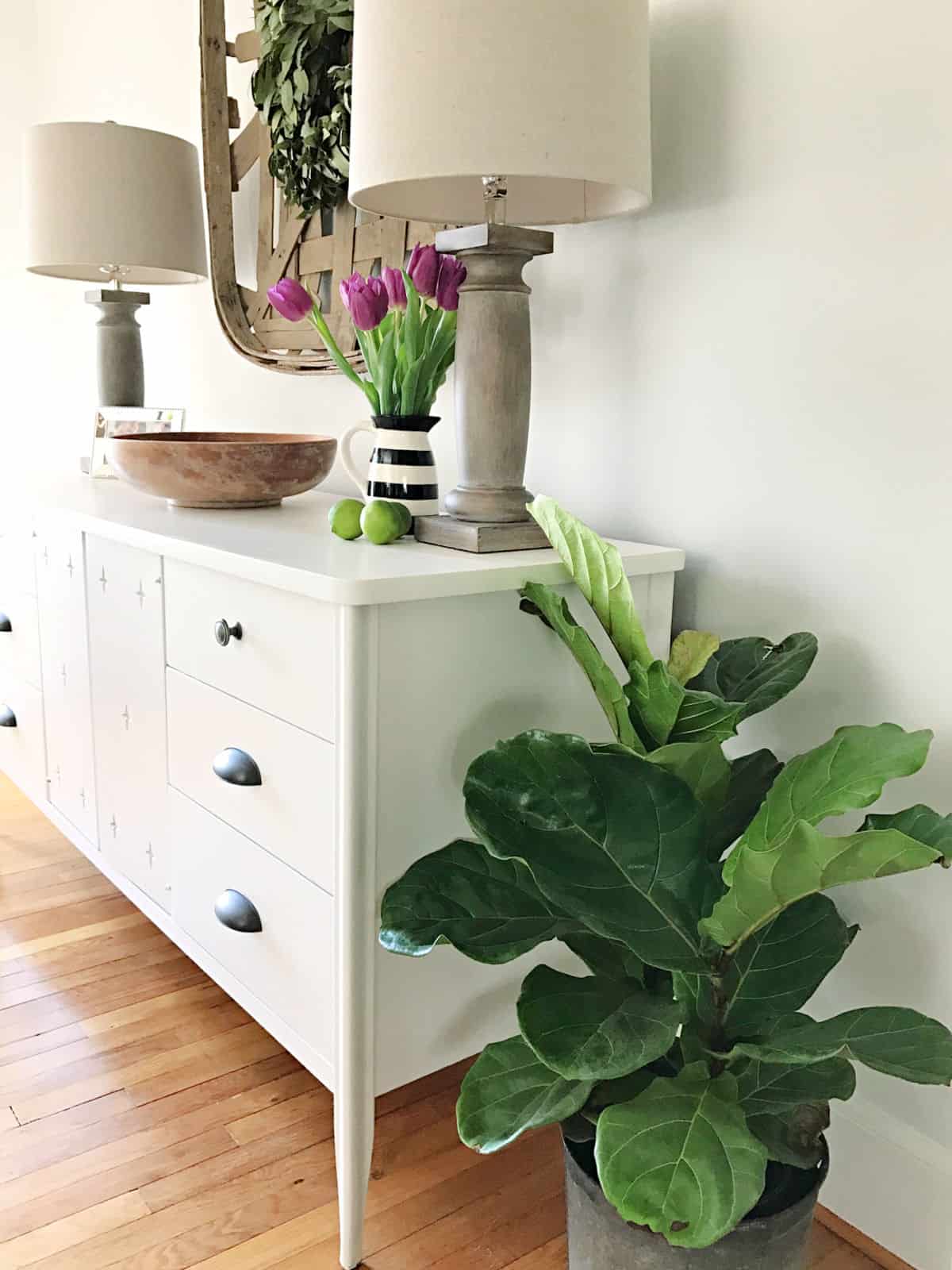
Fiddle leaf figs are fast growers and can even reach up to ten feet tall indoors.
There are a few cultivars (variations) of the fiddle leaf fig, including the Ficus lyrata Bambino, a dwarfed plant that only grows a few feet tall, and the Ficus lyrata Compacta, which is also dwarfed and grows smaller leaves that are more bunched together.
Also known as the banjo fig, the fiddle leaf fig has large, deeply veined, glossy foliage.
With such great leaves comes great responsibility, though!
The trickiest part of fiddle leaf fig indoor care is ensuring that its giant but beautiful leaves get plenty of sunlight. Other than that, fiddle leaf figs aren’t too demanding and will tolerate most indoor environments just fine!
Fiddle Leaf Fig Origin
The fiddle leaf fig originated in western Africa, and grows abundantly everywhere from Cameroon to Sierra Leone. It’s indigenous to lowland, tropical rainforests.
Because of their origins, the fiddle leaf fig thrives in humid, warm, bright environments.
This stylish indoor plant became trendy for interior design and decor in the 2010s. Splashed on almost every home decor magazine and all across Pinterest, the fiddle leaf fig plays wonderfully into any aesthetic.
Most people tend to grow FLF indoors but they can grow outdoors as well. If grown outdoors, they can reach over 60 feet tall!
Incredibly, these plants can grow on top of other trees, spreading their vast roots and strangling the host tree.
Light, Soil, Water
How much light does a fiddle leaf fig need?
The Fiddle leaf fig’s massive leaves require lots of sunlight, though too much light can burn the leaves.
The solution?
Bright, filtered light from a south or west-facing window.
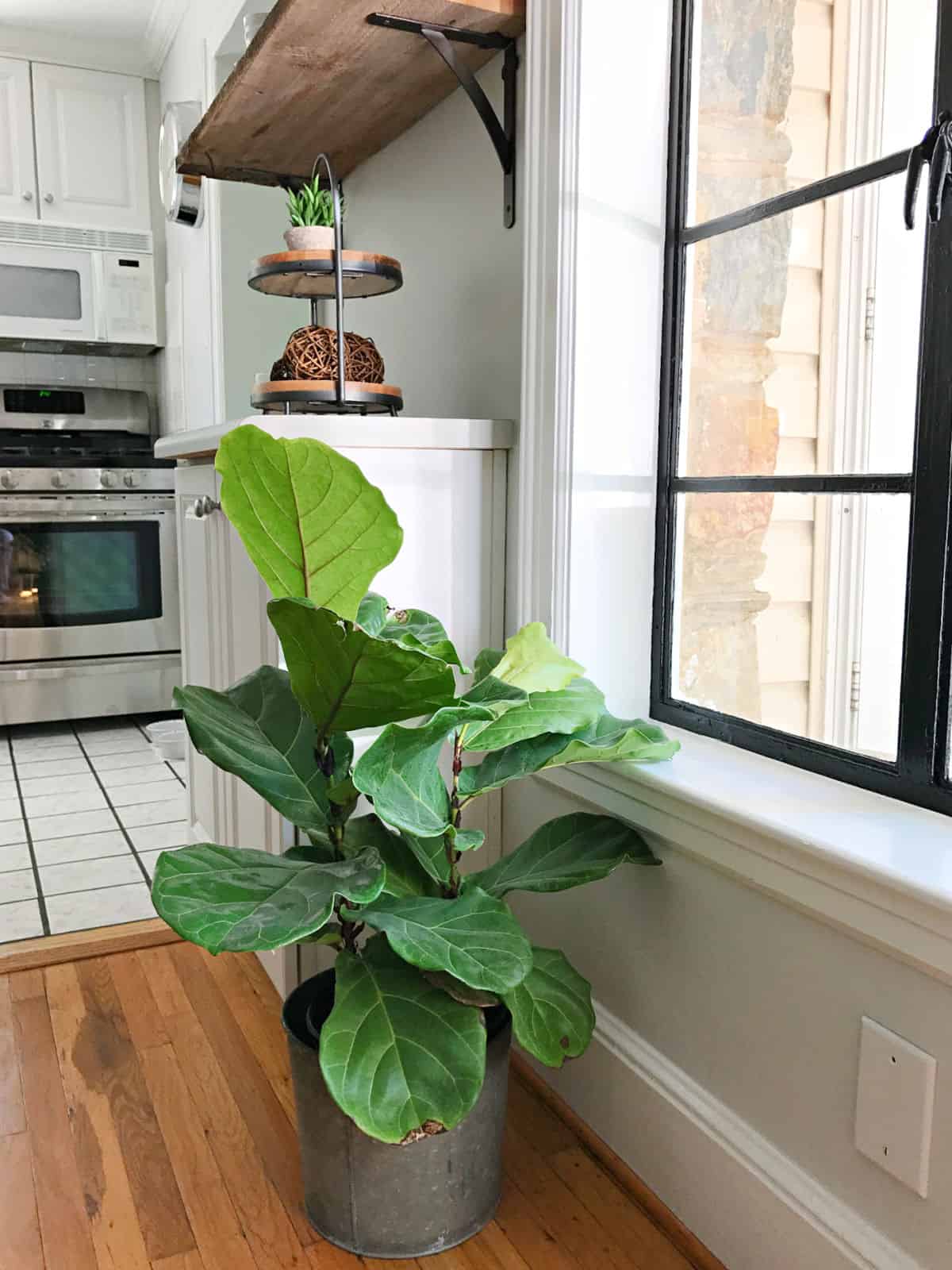
Direct exposure from an east-facing window will also work, since the afternoon sun won’t be as intense.
If you plan on keeping your fiddle leaf fig in direct sun, however, it will need very high levels of humidity to keep it healthy.
My Leo spends his days near our dining room window that faces west.
It seems like he prefers this spot although I do need to turn his pot every few months because he tends to lean towards the light source…the sun.
Unfortunately FLFs don’t do well in low-light locations, as its leaves will begin to droop and even shed. Luckily we’ve never had to deal with this with Leo.
Besides finding the perfect spot for you FLF to sunbathe, you should try to occasionally dust your fig’s leaves and trim off dead ones to allow the healthy leaves to soak up the sun.
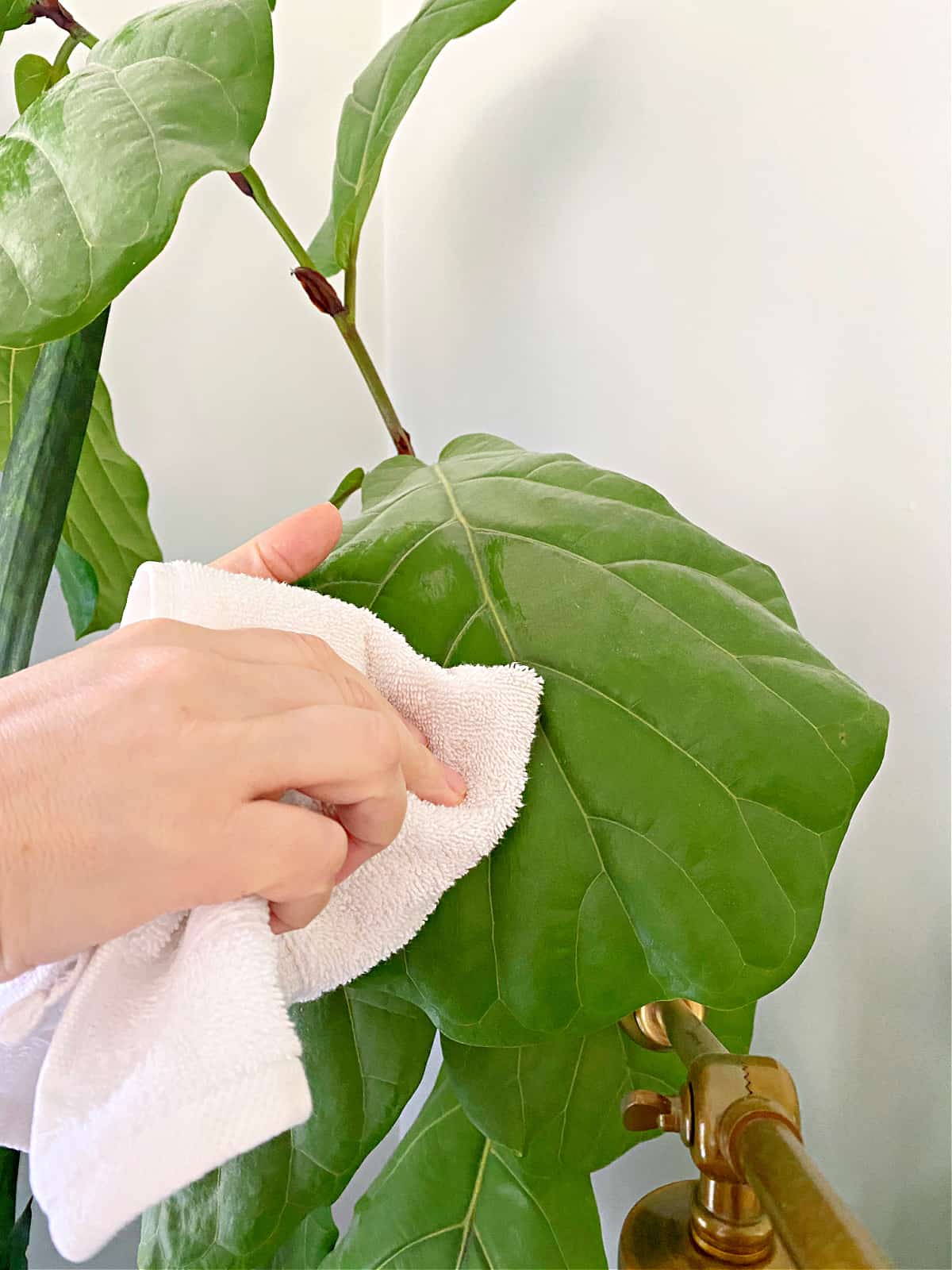
Best soil for a fiddle leaf fig
Soil is essential to your plant’s health and growth. When picking soil for your fiddle leaf fig, you should pick one that drains well while retaining moisture.
A mixture of half perlite for good drainage and half peat moss for moisture retention will work perfectly. Vermiculite should also work because it retains moisture well.
Don’t use a soil mix with sand as it contains salt. Its soil pH should be slightly acidic, around 6 to 7.
Fiddle leaf fig watering
Fiddle leaf figs need a decent amount of moisture, especially in its soil.
During spring and summer months, water the fiddle leaf fig thoroughly whenever the top two inches of soil dry out.
During the winter, water it slightly less.
I find that I can sometimes go two weeks without watering Leo during the winter.
Of course you may need to do it a bit more, or less, depending on your home’s enviroment.
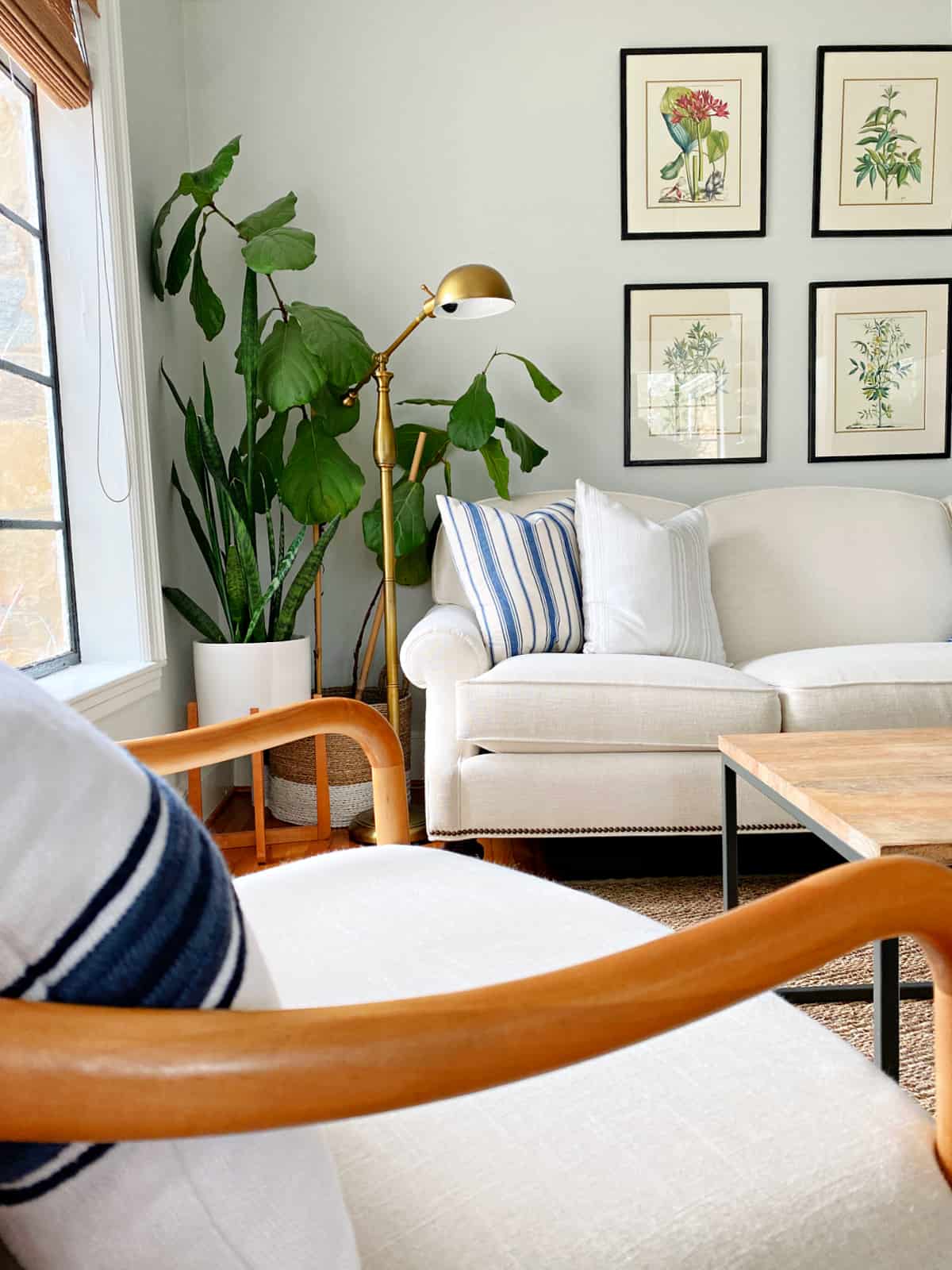
Signs that you aren’t watering your plant enough include yellowing or browning leaves, wilting leaves, and limp or floppy stems.
Overwatering, on the other hand, could lead to root rot, cause it to drop leaves, and even die.
To keep that from happening to Leo I often test the moisture level in the soil with a soil moisture meter.
Temperature & Humidity
Fiddle leaf figs originated in the warm, humid rainforests of Africa, so that should tell you a lot about its temperature and humidity needs.
These plants don’t do well with large temperature fluctuations, and have an ideal range between 60 and 85 degrees Fahrenheit.
They do not tolerate cold well at all, so it’ll do just fine indoors, however keep it away from drafty windows and doors.
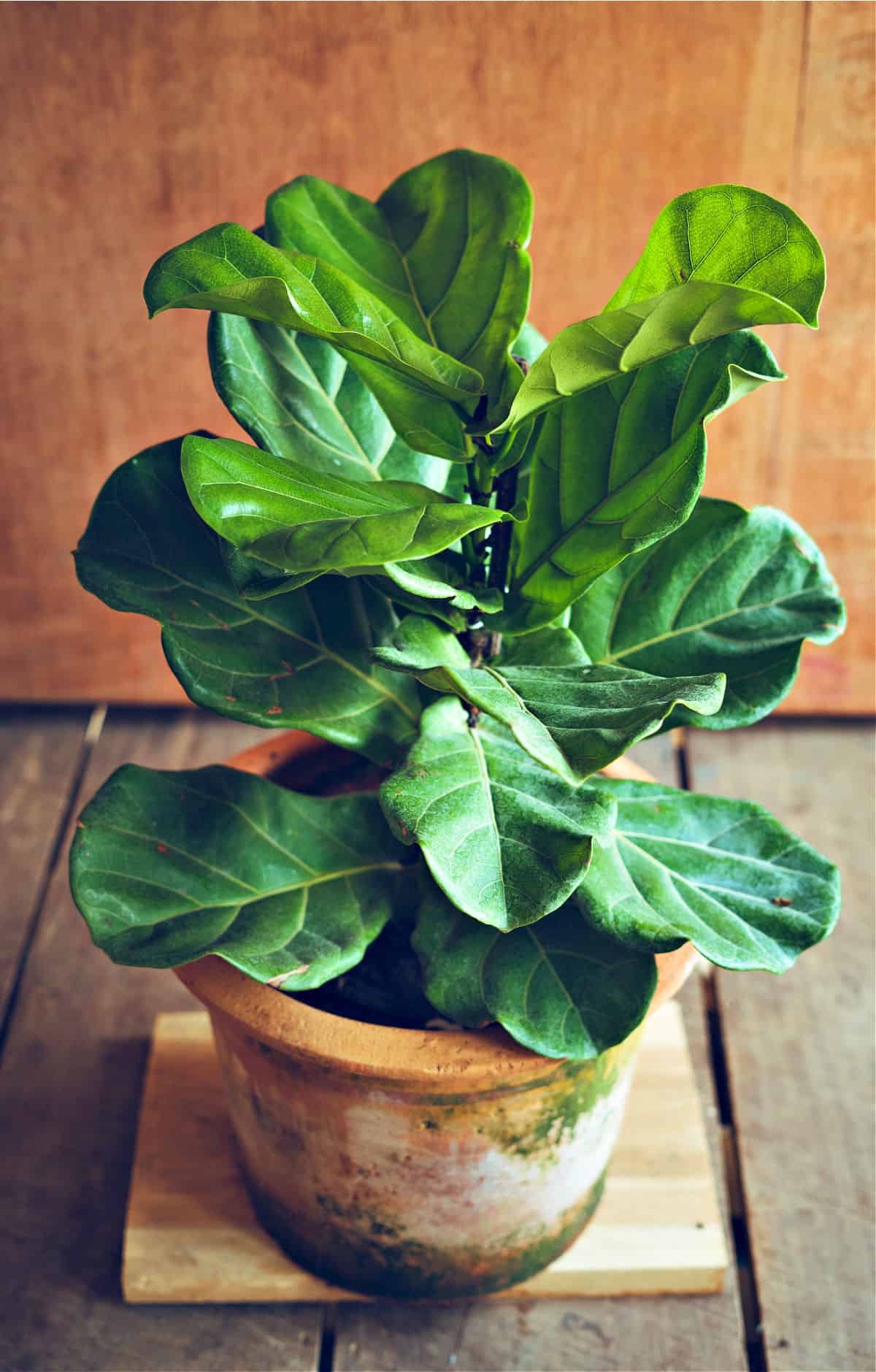
They thrive in humidity which can sometimes be hard to imitate indoors, especially during the winter months.
Fiddle leaf figs prefer humidity levels around 50-60%.
To artificially increase humidity indoors, you can mist the plant daily, place it on a pebble tray with water, or even set up a humidifier nearby.
Propagating a Fiddle Leaf Fig
Fiddle leaf figs can get pretty pricey because of how popular they are, so propagating yours might be a good idea.
First thing’s first, prepare your new pot with propagation mix.
The pot should have a drainage hole at the bottom, and ideally its soil should be half perlite and half peat moss to retain moisture and drain properly.
Mix thoroughly, then poke a hole in the center in preparation for the new stem cutting.
Use a sharp, clean pair of scissors or pruners to cut a healthy stem. My favorite pruning shears are from Fiskers.
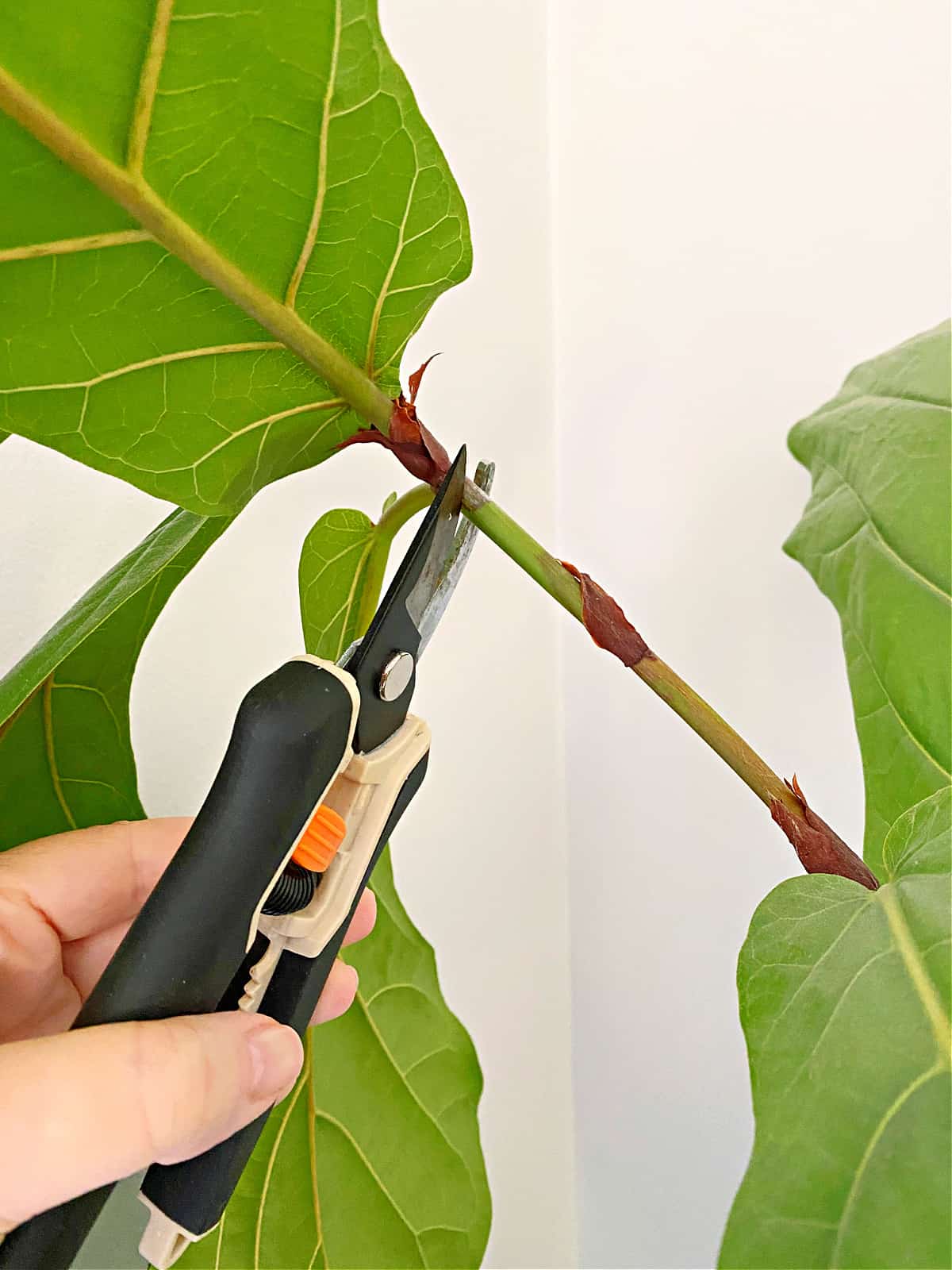
The ideal stem should have two to three nodes (where a leaf connects to the stem).
You should cut right below the lowest node. The more nodes, the more possible growing points there are when propagating.
Then dip one end in rooting hormone, which will speed up the rooting process.
Place your stem cutting about a third of the way deep into its new soil.
Cover the top of the cuttings with a plastic bag, and mist it daily to keep the humidity high.
Don’t let the soil get too wet, however, because the stem cutting rots very easily.
Keep it in bright, indirect light. You can expect rooting to occur in four to six weeks.
A good way to tell if roots have sprouted is to tug gently, if you feel resistance, roots have sprouted!
Some people have success with propagating a fiddle leaf fig in water, but it can be a bit tricky.
You have to change the water every other day to get the plant enough oxygen, which even then might not be enough.
Most people stick to propagating a stem cutting in soil for the best results.
I just tried my hand at propagating my fiddle leaf fig. Check out the method I used and how it turned out.
Final Thoughts
The fiddle leaf fig makes a lovely addition to any home! Its giant, glossy leaves are stunning, though they do require a bit of upkeep.
The maintenance is worth it, though. As long as you find a nice, sunny spot in your home for this fast-growing, tropical plant, it will grow beautifully!
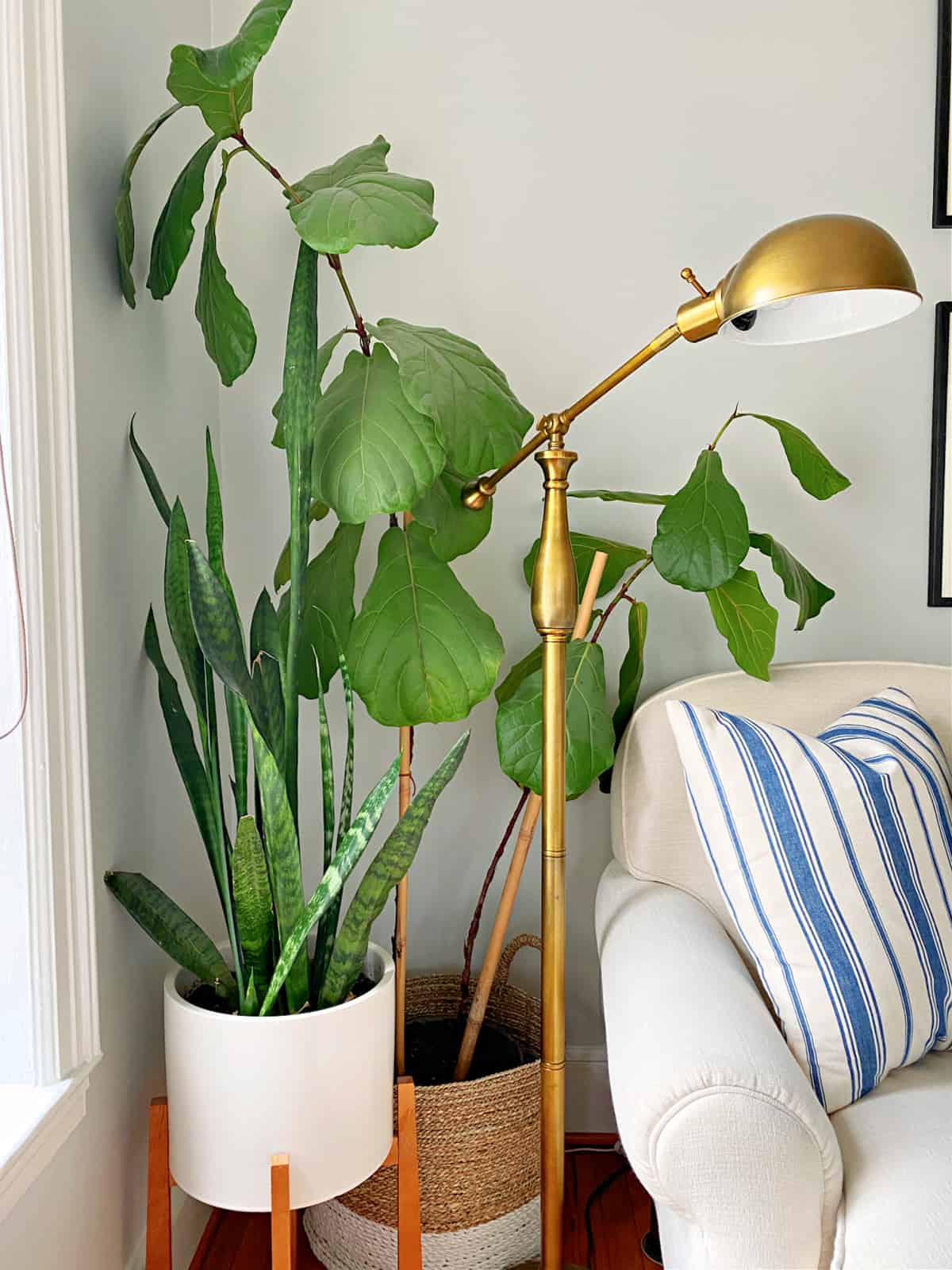
Leo is in desperate need of repotting so that is my next task.
I’m crossing my fingers that it’s successful.
Have you ever tried to grow a fiddle leaf fig/ficus?

